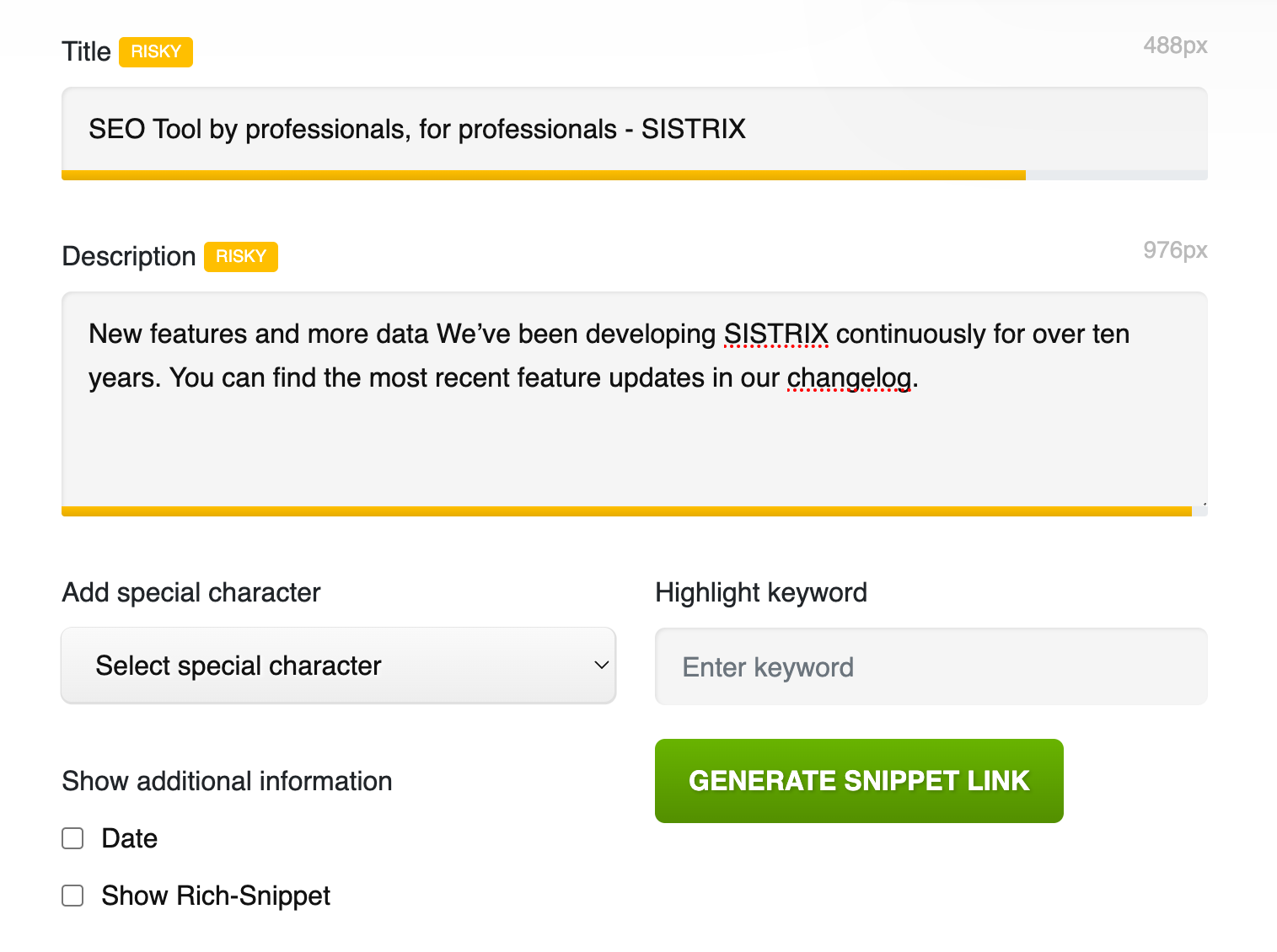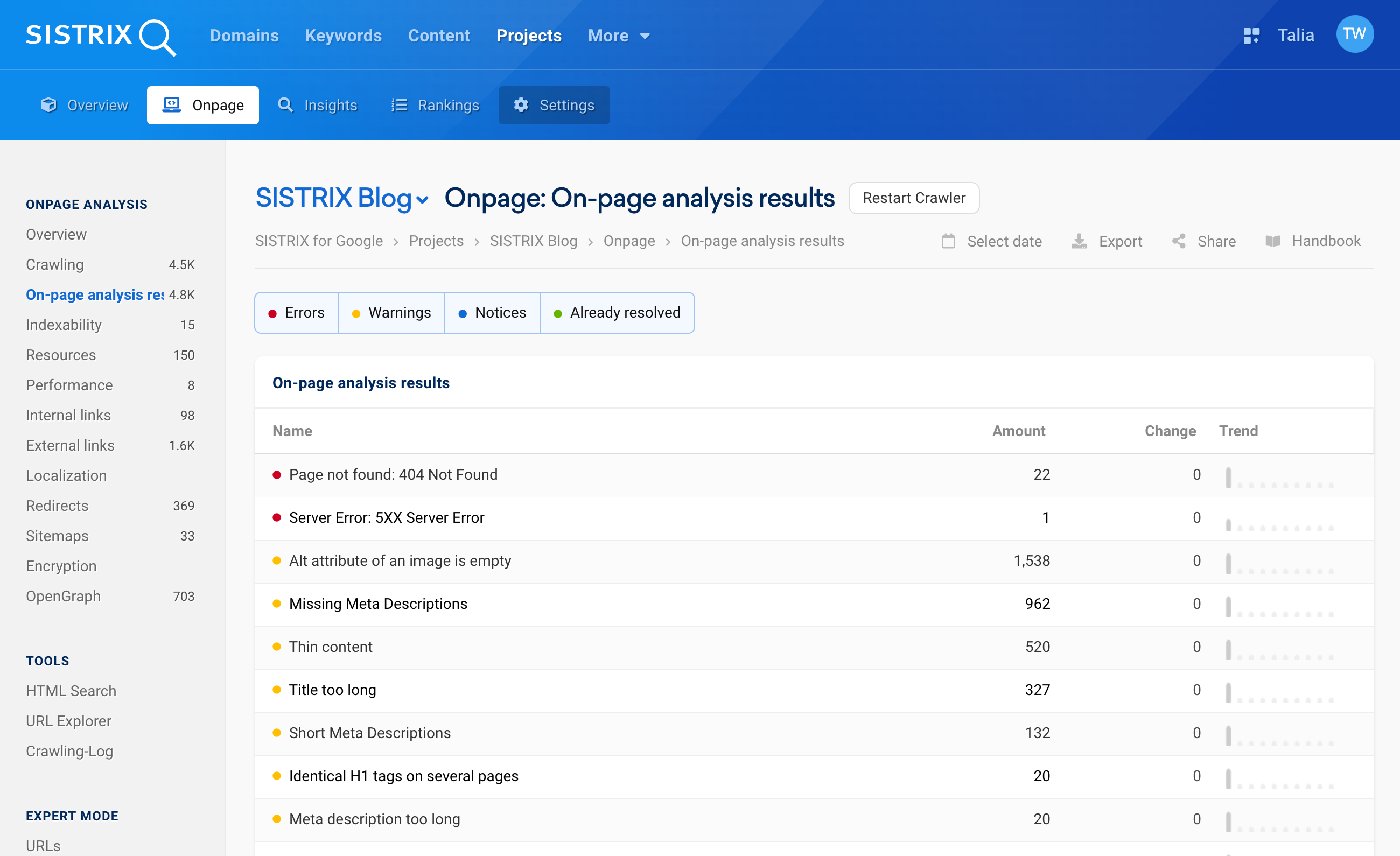The length of the title should not exceed 70 characters. The title should be formulated in such a way that it encourages searchers to click on your result. It is one of 200 ranking factors for Google.
Discover how SISTRIX can be used to improve your search marketing. 14 day free, no-commitment trial with all data and tools: Test SISTRIX for free
The title element, also known as the title tag, is one of the most important factors when it comes to the OnPage optimisation of a website.
Together with the meta description, the title is the first point of contact between the searcher and your website in the search results pages. This makes it all the more important to harmonise the two in order to increase the click-through rate and attract more visitors from organic search.
Basics of a Title
When designing the title of a page, it is important to keep the following things in mind:
- The optimal title of a website consists of no more than ~ 70 characters (without spaces), otherwise it could be cut off by “…”.
- The title should be optimised for the user (offer added value, encourage clicking).
- Every URL should have its own unique title.
- The keyword for which the URL should primarily rank should be in the title, ideally in first position or at the beginning of the title.
Ensure that the title looks natural and provides informative added value for the user.
Technically speaking, Google does not base the maximum length of the title element on the number of characters, but calculates the limit in pixels. The content of the title element (title tag) can be displayed on the search results pages with a width of ~ 540 pixels. Starting from a length of approximately 50 characters, there is a risk that the title will be cut off.
Best Practice Example: Title Tag
A good title is informative and meaningful. It addresses the topic of the article and piques the user’s curiosity.

The next example offers all the information the searcher needs in just 37 characters and clearly addresses the target group with the desired product.

A good strategy for title tag optimisation is to mention the domain or brand name in the title.
Tool for Optimising the Title
Free SERP Snippet Generator
The title and meta description together are important components of your SERP snippet. With our free tool, the SERP snippet generator, you can start optimising your title and meta descriptions immediately:

The SISTRIX SERP snippet generator shows you what your snippet could look like in the search results and whether the title and description are displayed in full; ideal if you want to create perfect titles and meta descriptions.
Optimise Title With SISTRIX Onpage Projects
For a comprehensive review and optimisation of all title elements on your website, you can use the SISTRIX Onpage projects.

The Onpage projects allow you to crawl and check your website for existing SEO errors – e.g. missing or too long title and meta descriptions – and give you valuable onpage tips on how to improve your pages.
Like every other module in SISTRIX, the Onpage projects module is activated for you as part of the free two-week SISTRIX trial period. The non-binding test phase ends automatically.
What Google says
We're looking for a concise description of the page that's also relevant to the query.
Source: Matt Cutts
Test SISTRIX for Free
- Free 14-day test account
- Non-binding. No termination necessary
- Personalised on-boarding with experts